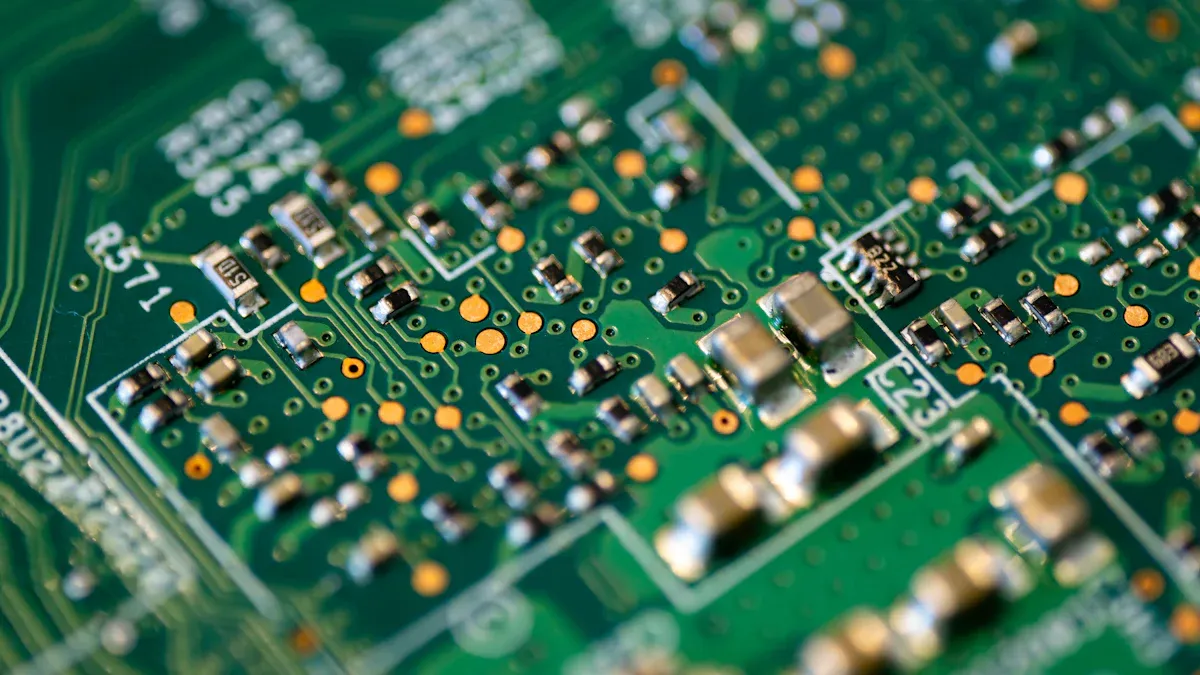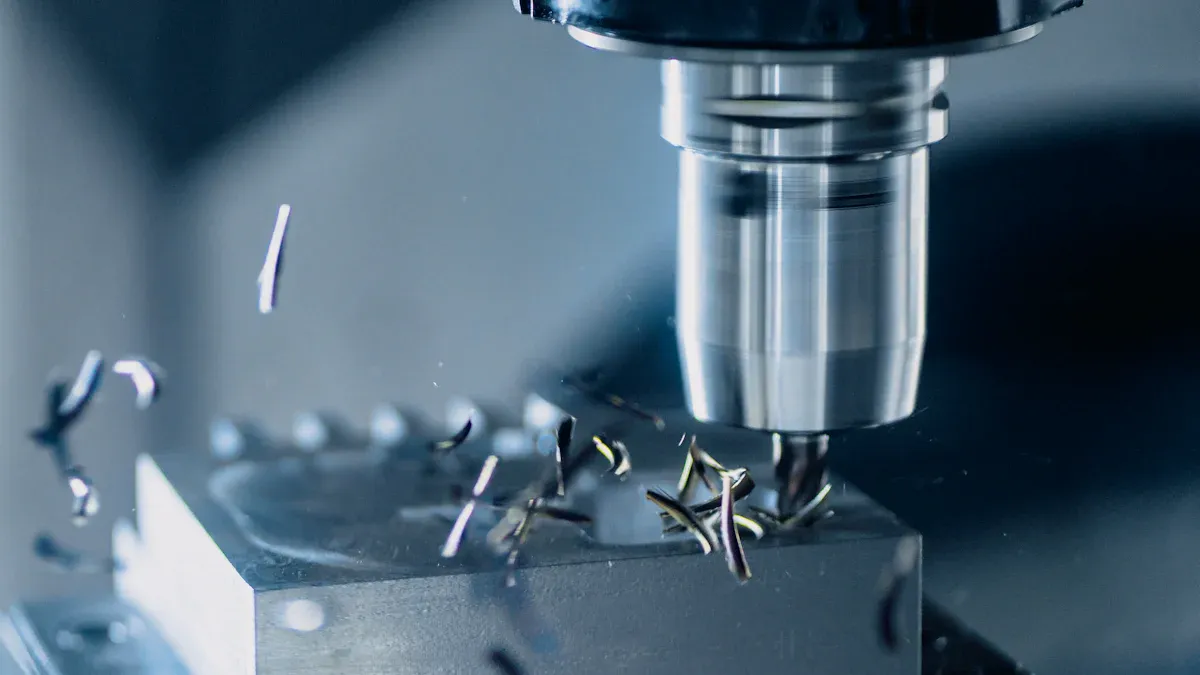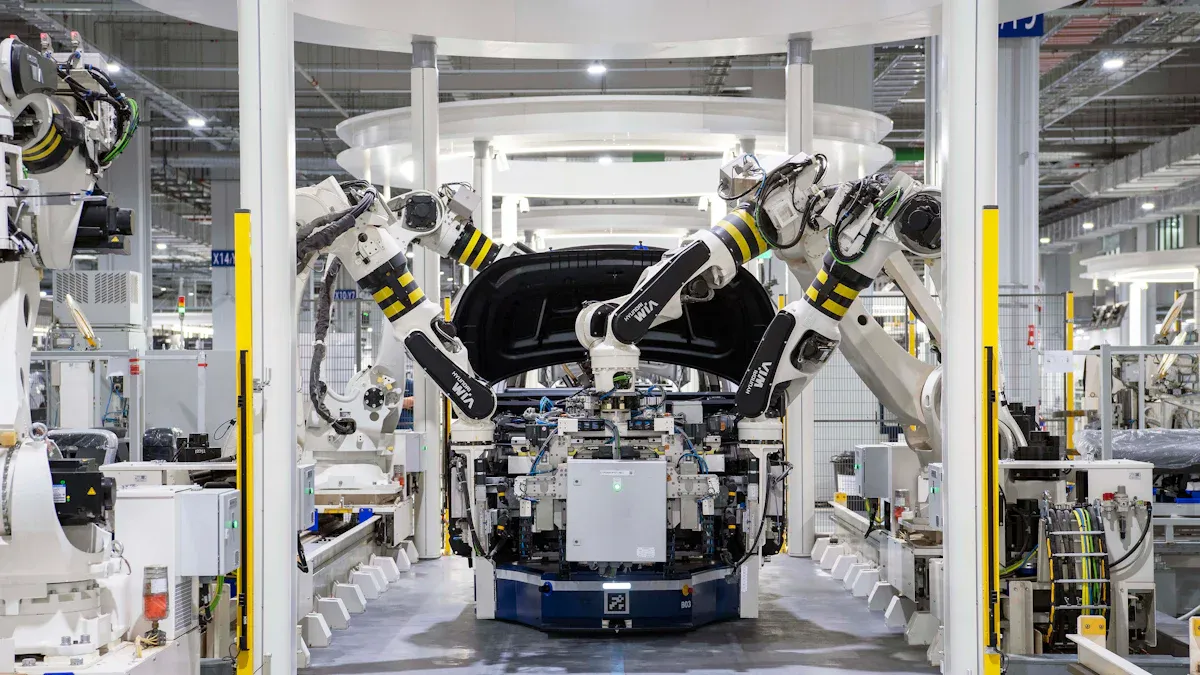
Precision plays a vital role in injection mold design for small electronic components. Even minor inaccuracies can lead to defects, compromising the functionality of these delicate parts. The increasing demand for advanced electronics underscores the need for precise molds. Consider these trends:
When designing molds, you must also account for plastic behavior, such as warping and shrinking, to ensure consistent quality.
Warping and shrinking are two of the most common plastic injection defects that can compromise the quality of injection molded parts. These issues often arise due to uneven cooling or material shrinkage characteristics. For example, plastics like ABS and polypropylene exhibit different shrink rates, which can lead to dimensional inaccuracies in small electronic components. Uneven cooling can further exacerbate warpage, especially in complex geometries.
To minimize these problems, you should focus on optimizing processing conditions. Studies show that factors like supercritical fluid content and core-to-skin volume ratio significantly reduce shrinkage and warpage in polypropylene parts. Additionally, understanding temperature differentials during manufacturing can help mitigate warpage and ensure dimensional accuracy.
A study on microcellular co-injection molding revealed that adjusting processing parameters effectively reduces shrinkage and warpage, improving the reliability of molded parts.
By addressing these problematic areas early in the design process, you can enhance the precision and durability of your plastic components.
Selecting the right material is crucial for ensuring the performance and longevity of small electronics. Each plastic type offers unique properties, such as impact resistance, heat resistance, and flexibility. For instance, PEEK provides high impact resistance but lacks flexibility, making it suitable for rigid components. On the other hand, TPU offers excellent flexibility and chemical resistance, ideal for features like hinges or seals.
Here’s a comparison of common materials used in plastic injection molding for electronics:
| Material | Impact Resistance | Heat Resistance | Chemical Resistance | Flexibility | Cost-Effectiveness |
|---|---|---|---|---|---|
| PEEK | High | Moderate | High | Low | High |
| ABS | High | High | Moderate | Moderate | Moderate |
| TPU | High | Moderate | High | Very High | Moderate |
| Nylon | High | High | High | Moderate | Moderate |
When choosing materials, consider the specific requirements of your components. For example, ABS is a versatile option for parts requiring high heat resistance and moderate flexibility. By aligning material properties with your design needs, you can prevent common plastic injection defects and improve overall product quality.
Consistent material flow is essential for producing high-quality injection molded parts. Variations in flow can lead to defects like warpage, sink marks, or incomplete fills. To achieve uniform flow, you must carefully control process parameters such as injection pressure, cooling time, and back pressure.
| Metric | Description |
|---|---|
| Injection Pressure | Influences the filling of the mold and affects the density and quality of the final product. |
| Cooling Time | Must be controlled to prevent defects such as deformation or warping due to premature ejection. |
| Back Pressure | Essential for homogenizing the plastic melt, ensuring consistent quality across production cycles. |
| Cycle Time | Represents the total time for a complete injection molding cycle, impacting overall production efficiency. |
Advanced technologies like real-time monitoring systems can further enhance material flow. These systems provide live feedback, allowing you to make on-the-fly adjustments to maintain consistency. Additionally, precision robotics and CAD tools enable intricate designs while ensuring optimal material placement. By focusing on consistent flow, you can reduce defects and improve the efficiency of your production process.

Uniform wall thickness is a cornerstone of precision in injection mold design. Variations in thickness can lead to defects such as warpage, voids, or sink marks, which compromise the quality of injection molded parts. Maintaining consistent thickness ensures even cooling and solidification during the molding process, reducing the likelihood of problematic areas.
To achieve uniformity, you should:
- Design walls with consistent thickness throughout the part.
- Avoid abrupt changes in thickness, as these can create stress concentrations.
- Use CAD tools to simulate material flow and identify potential weak points.
Tip: Optimizing wall thickness balances strength, weight, and manufacturing efficiency. This approach not only improves the durability of your plastic components but also enhances production efficiency.
By prioritizing uniform wall thickness, you can produce high-quality parts that meet the stringent demands of electronics manufacturing.
Gradual transitions in mold design play a vital role in preventing weak points and stress concentrations. Abrupt changes in geometry can disrupt material flow, leading to defects and reduced structural integrity. Instead, you should focus on smooth transitions to ensure consistent cooling and solidification.
Here are some effective strategies for managing transitions:
- Incorporate tapers, gussets, and radii to maintain uniform cooling.
- Avoid sharp corners, as they can act as stress concentrators.
- Use gradual changes in wall thickness to prevent weak points.
Note: Studies show that gradual transitions help maintain uniform cooling, reducing the risk of defects like warpage and voids.
By implementing these strategies, you can enhance the structural integrity of your injection molded parts while minimizing defects.
Undercuts can complicate the molding process, increasing mold complexity and production costs. They often require additional tooling or complex mechanisms, which can lead to delays and higher expenses. Avoiding undercuts simplifies the design and ensures a smoother production process.
To eliminate undercuts, consider the following:
- Remove unnecessary details from the part’s geometry.
- Explore alternative shapes that achieve the same functionality without undercuts.
- Use draft angles to facilitate easy ejection of parts from the mold.
Tip: Small modifications to a part’s geometry can often eliminate the need for undercuts, reducing mold complexity and improving production efficiency.
By carefully evaluating your design decisions, you can produce high-quality parts without relying on undercuts. This approach not only enhances precision but also reduces costs and streamlines the manufacturing process.

Clips and hinges are essential for many small electronic components. These features allow for secure assembly and easy access during maintenance. When designing clips, you should focus on flexibility and durability. Materials like TPU or nylon work well due to their high flexibility and impact resistance. For hinges, consider using plastics with excellent fatigue resistance to ensure long-term performance.
To optimize the design of these features:
- Use rounded edges to reduce stress concentrations.
- Incorporate draft angles to simplify mold ejection.
- Test prototypes to ensure the clips and hinges can withstand repeated use.
By carefully designing these components, you can enhance the functionality and reliability of your electronic products.
Overmolding is a powerful technique for creating multi-material components. It involves molding one plastic over another to combine different properties in a single part. For example, you can use a rigid plastic for structural support and a softer plastic for grip or sealing.
Research highlights the effectiveness of overmolding in improving component integrity. For instance:
| Study | Findings |
|---|---|
| Chen et al. (2010) | Different film thicknesses and polymers affected mold surface temperature, improving results. |
| Baek et al. (2008) | Higher injection rates reduced warpage in film insert molded parts. |
| Bakr et al. (2022) | Lower melt temperatures and higher injection speeds impacted stress and electrical resistance. |
To achieve the best results, you should carefully control injection speed and melt temperature. These parameters influence the bond strength between materials and the overall quality of the part. Overmolding allows you to create complex features while maintaining precision and durability.
Structural integrity is critical for small electronic components. Weak points in the design can lead to failures during use. To enhance strength, you should focus on reinforcing critical areas and distributing stress evenly.
Here are some tips to improve structural integrity:
- Add ribs or gussets to strengthen thin walls.
- Use gradual transitions to avoid stress concentrations.
- Select plastics with high tensile strength for load-bearing parts.
By prioritizing structural integrity, you can ensure your components perform reliably under various conditions.
Reducing production costs starts with identifying inefficiencies in your injection molding process. You can use process simulations to pinpoint bottlenecks and streamline operations. For example, a manufacturing company achieved a 15% cost reduction by optimizing their production line and improving inventory management. Implementing just-in-time inventory systems can also reduce holding costs and free up cash flow.
Financial models like linear programming help you find optimal solutions for production processes. These models consider cost constraints, ensuring you manage expenses effectively. Additionally, renegotiating supplier contracts can uncover hidden savings. By focusing on these strategies, you can lower costs without compromising the quality of your plastic components.
Computer-aided design (CAD) tools play a crucial role in achieving precision in injection mold design. These tools allow you to simulate the design process, ensuring manufacturability in mind from the start. Industry studies show that CAD tools combined with ultra-precision machining methods can achieve surface accuracy as fine as 2.27 μm P-V. This level of precision minimizes defects like warpage or sink marks, improving the overall quality of your plastic parts.
Using CAD tools also enhances collaboration between design and manufacturing teams. Real-time adjustments during the design process reduce errors and save time. By leveraging these tools, you can create molds that meet high standards of accuracy and manufacturability.
Balancing material quality with cost is essential for efficient injection mold design. High-quality materials may increase upfront costs but reduce defects and rejects, saving money in the long run. Consider the product lifecycle and demand when making material decisions. For high-demand products, investing in durable molds ensures scalability and reduces per-unit costs.
Comparative analyses highlight the trade-offs between different manufacturing techniques. Injection molding is more economical for high-volume production compared to 3D printing, which suits low-volume, complex designs. CNC machining offers tighter tolerances for prototypes, while blow molding works for simpler structures. By evaluating these options, you can choose the best approach for your production needs.
Precision in injection mold design ensures the reliability and functionality of electronics. By addressing material behavior, you reduce defects like warping and shrinking. Designing for precision improves structural integrity and enhances the quality of components. Cost-efficiency strategies, such as automation and high-speed machines, lower production costs and shorten lead times.
Implement these tips to create molds that meet industry standards and boost production success.
Warping and shrinking are the most common defects. These occur due to uneven cooling or material shrinkage. You can minimize these issues by optimizing cooling times and selecting materials with predictable shrinkage rates.
Focus on uniform wall thickness and gradual transitions in your design. Use CAD tools to simulate material flow and identify weak points. These steps help you achieve precision and reduce defects.
Materials like ABS, TPU, and PEEK are popular. ABS offers heat resistance, TPU provides flexibility, and PEEK ensures high impact resistance. Choose based on your component's specific requirements.
Overmolding combines two materials to enhance functionality. For example, a rigid plastic provides structure, while a softer material adds grip or sealing. This technique improves durability and usability.
Yes, it can. Automation, optimized cycle times, and high-speed machines lower labor costs and increase efficiency. These strategies reduce per-unit costs, especially for high-volume production.